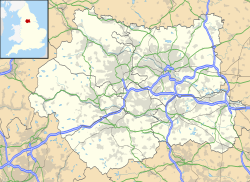| Christchurch, Ilkley | |
|---|---|
 Christchurch, Ilkley | |
| 53°55′27.9″N1°49′28″W / 53.924417°N 1.82444°W | |
| OS grid reference | SE 11613 47590 |
| Location | Ilkley, North Yorkshire |
| Country | England |
| Denomination | United Reformed and Methodist Local Ecumenical Partnership |
| Previous denomination | Congregational |
| Website | www.christchurchilkley.org.uk |
| Architecture | |
| Heritage designation | Grade II listed [1] |
| Architect(s) | James Pigott Pritchett Jr |
| Groundbreaking | 30 May 1868 |
| Completed | 16 June 1869 |
Christchurch, Ilkley is a Grade II listed United Reformed and Methodist ecumenical partnership church in Ilkley, North Yorkshire, England.
